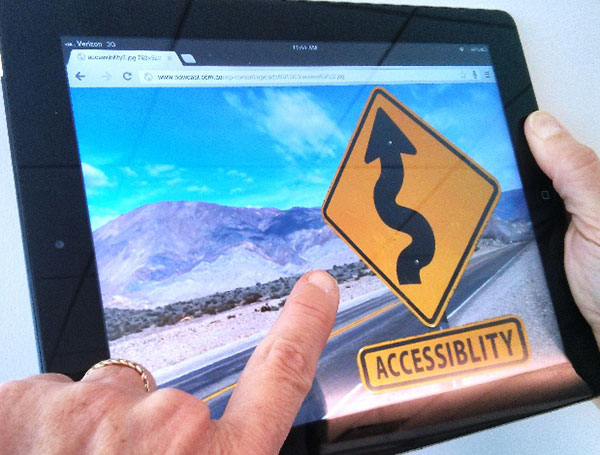6 Digital Media Trends for 2015: You Can Make Them Accessible!

Resolutions and predictions abound this time of year. If you’ve already lost the fight to finally give up sardine ice cream, you can always resolve to maintain or improve your digital media accessibility. Some people say that accessibility and Section 508 compliance squashes innovation and new trends, but with the right approach, you can make them accessible. When you consider accessibility at every project’s onset, you’ll make the most of these trends and engage your audience and, perhaps, gain new users.
Let’s look at six digital media predictions to see how you can use them and still create an accessible user experience.
- According to Future Insights Media, richer Web graphics will increase in popularity and provide “richer, more immersive experiences.” This aspect of new media is exciting, and it can broaden creativity and innovation.
- Before you start your SVG plans, check out Leonie Watson’s tips on accessible SVG and her guidance on using ARIA to increase SVG accessibility.
- The Future Insights Media article also mentions that we can expect to see more subtle and clever animations. We’ve already seen large background graphics that move.
- Whenever you use animations, it’s important to check that they don’t annoy users, but more importantly, that they don’t cause the screen to flash. Screen flashing or flickering can cause some people to have seizures or to become nauseous or dizzy. You can use the PEAT tool from the Trace Center to be sure.
- Also consider that animations can distract people who have cognitive impairments. See WebAIM’s distractability simulation to experience it for yourself.
- In its article on design trends that will rule 2015, Designmodo says that we’ll see more unique navigation menus. It’s always good to see trends that can improve the user experience; however, there’s a good reason that Vincent Flanders coined the term “mystery meat navigation,” back in the earlier Web days.
- A clear and well-defined navigation scheme will benefit all users, including people who have cognitive impairments. If you decide to create a unique menu, be sure that your audience can easily perceive it as navigation and use the navigation scheme consistently throughout your project.
- Forbes Magazine says that content marketing will become inseparable from social media marketing. This means that writing in plain language is more important than ever. Because we write shorter messages on some social media platforms, conveying your message in a clear manner—using limited characters—can be a real challenge.
- Learn about the audiences you’ll need to consider when you’re writing accessible content.
- Creative Bloq discusses the decline of the website and AdAge’s Digital Next blog goes even further by recommending a mobile-only strategy. We’ve been approaching this trend since the “mobile first” movement began. A mobile presence is important since some people only use mobile devices for Web access.
- When it comes to people with disabilities, having a desktop website is still critical. According to WebAIM’s fifth screen reader survey and their survey of people with motor disabilities, the respondents either prefer to use laptop or desktop computers for their Web experiences, or they still use desktop instead of mobile. This is probably because it’s easier to use their assistive technologies on those devices. By all means, have a mobile presence, but also serve the needs of people who aren’t able or willing to rely on a mobile device for their Web use.
- Creative Bloq also mentions the automation of coding. When FrontPage (and other programs) hit the scene, people enjoyed the ease of creating a digital media project without knowing how to code. The article says that newer, better tools will automate the coding process. While I wonder what this will do to all of the great libraries on GitHub, this trend does seem inevitable.
- One of the mainstays of accessibility is code that translates into accessible functionality. Whatever option you choose—hand-coding, code libraries from Github, or automated tools—make sure you develop or use valid, semantic code.
Trends come and go, but producing accessible digital media is necessity—no matter what’s in. You can learn more about how make these trends conform with accessibility mandates with techniques from the World Wide Web Consortium.
Have you decided to use a new or exciting functionality? Share your plans below.

